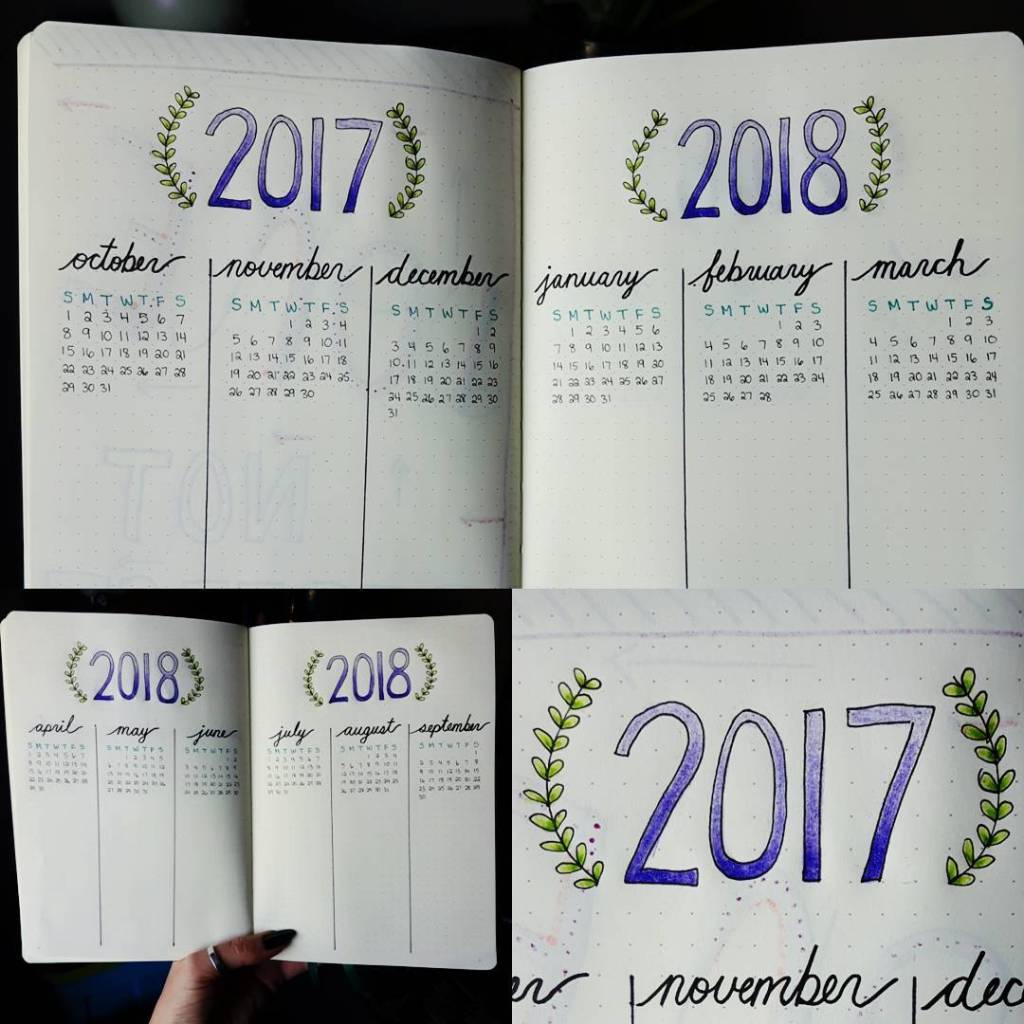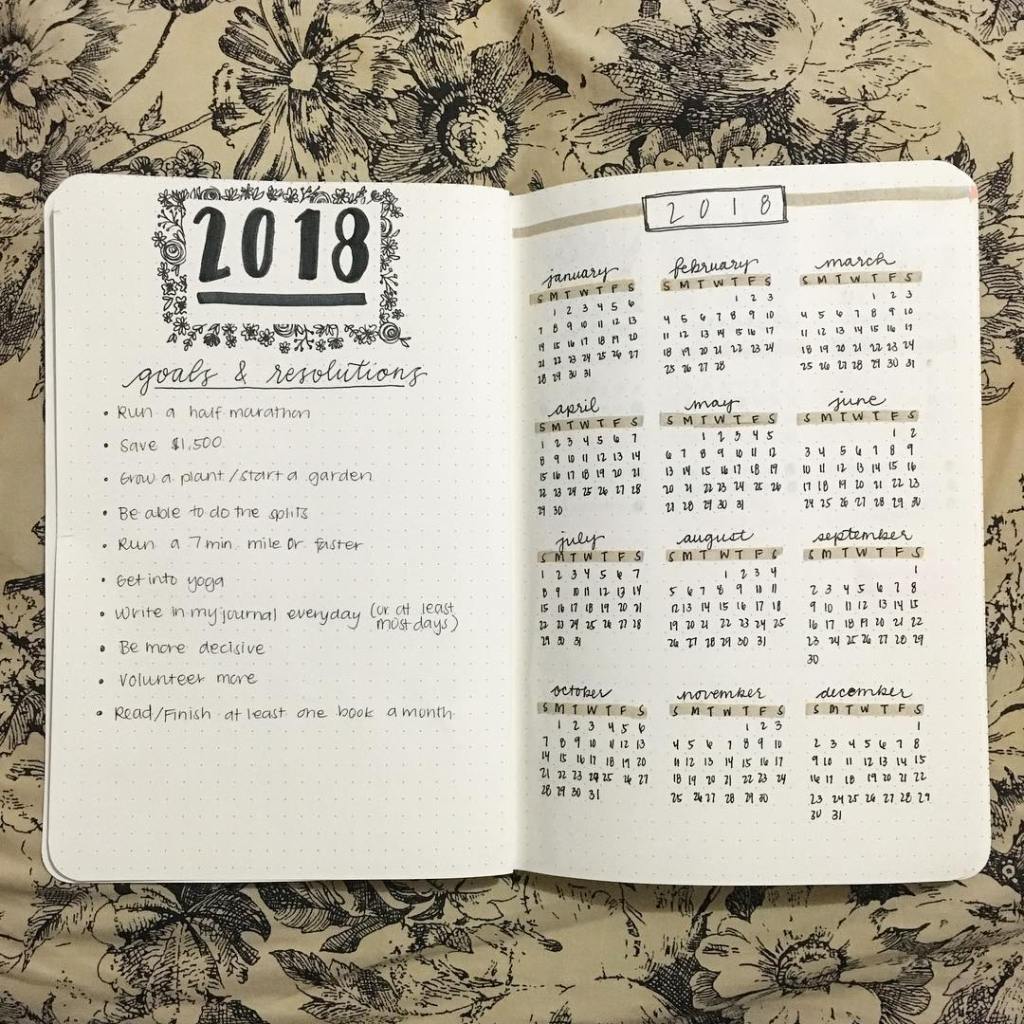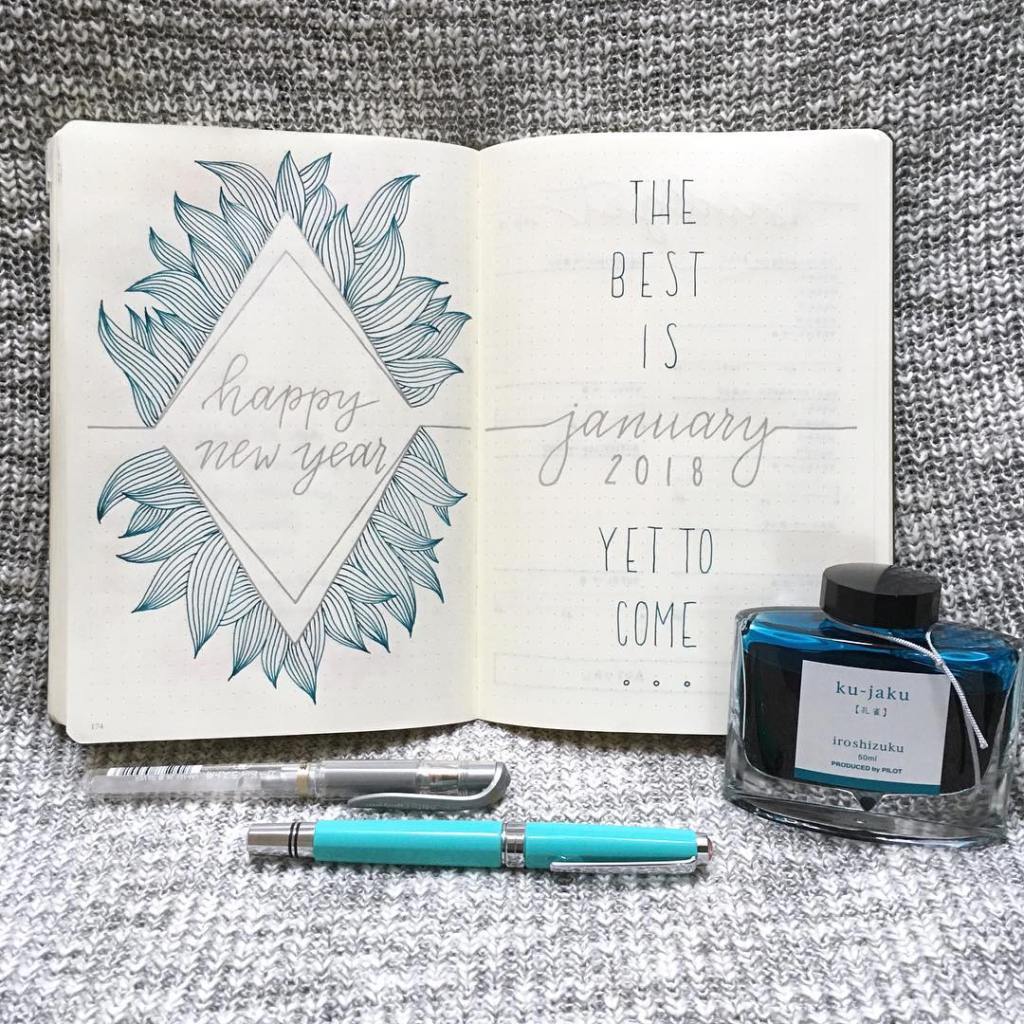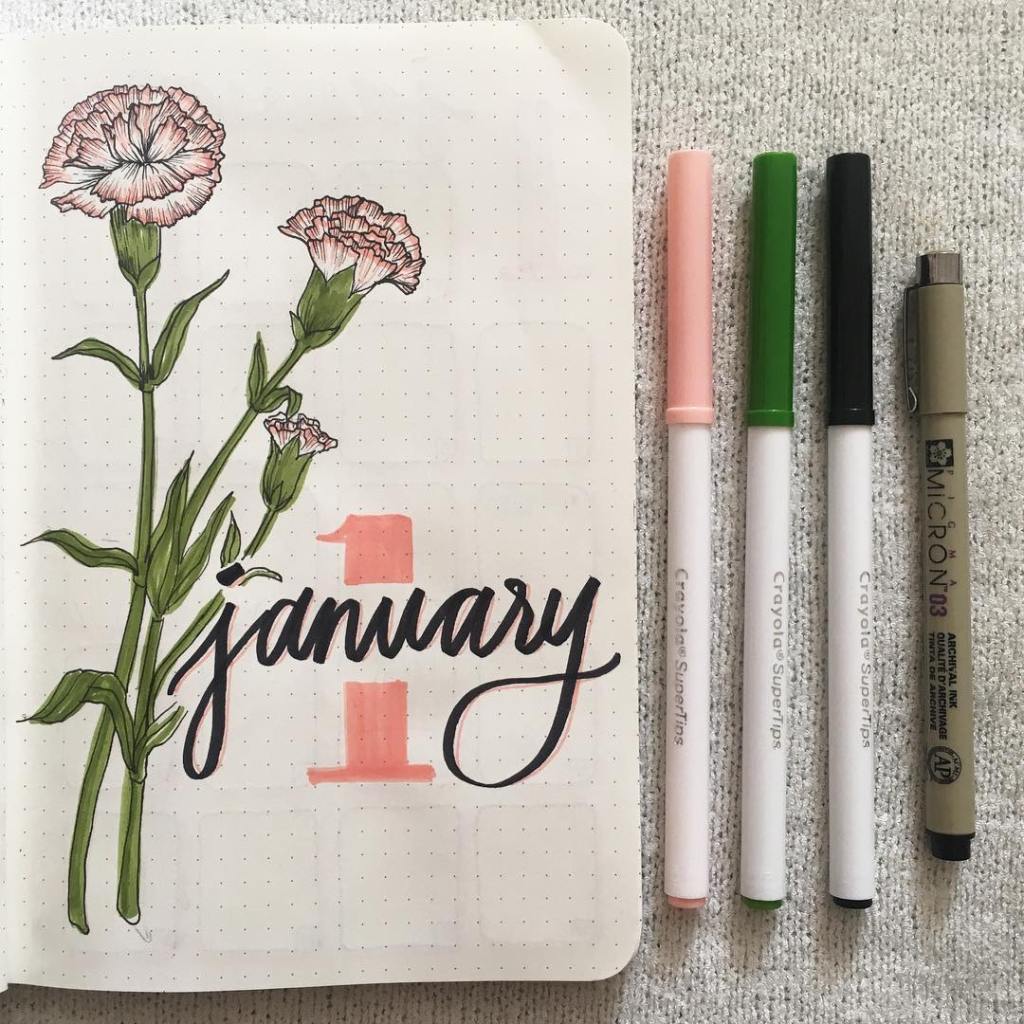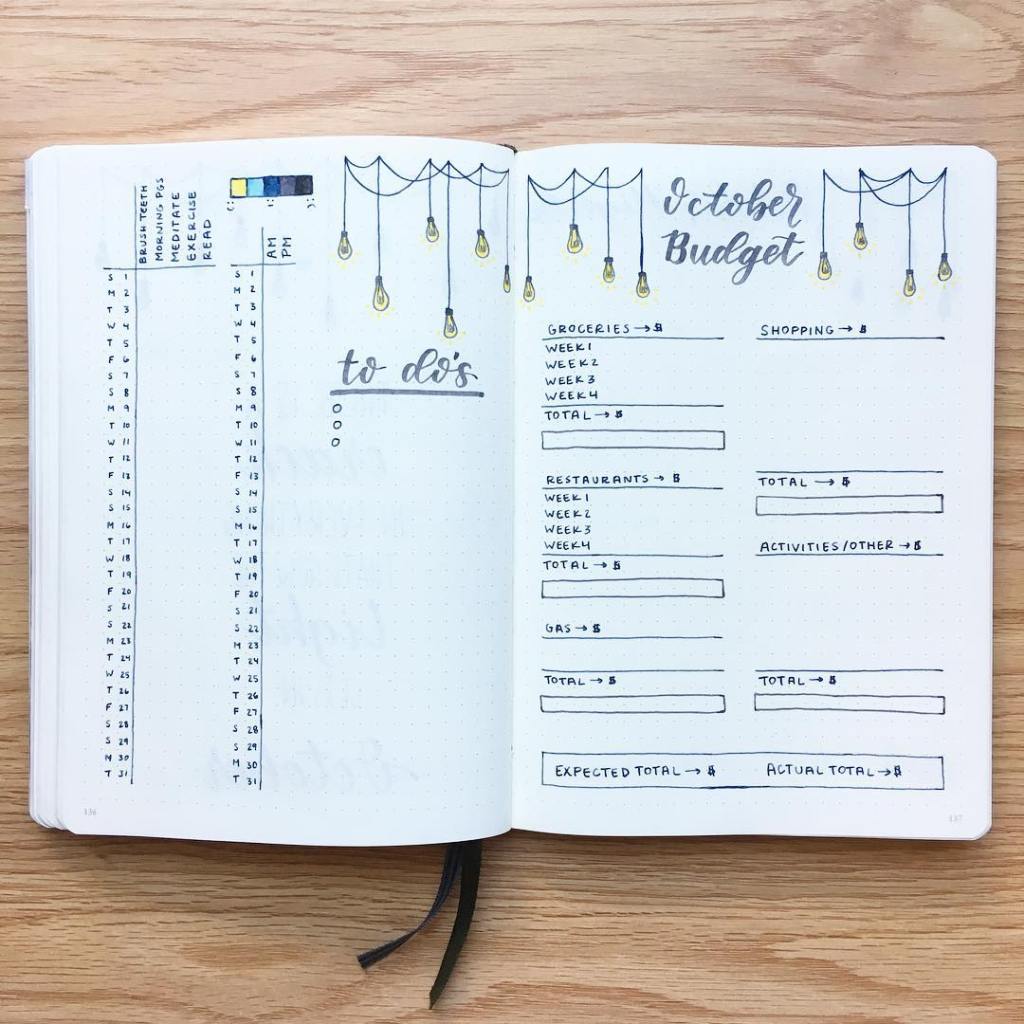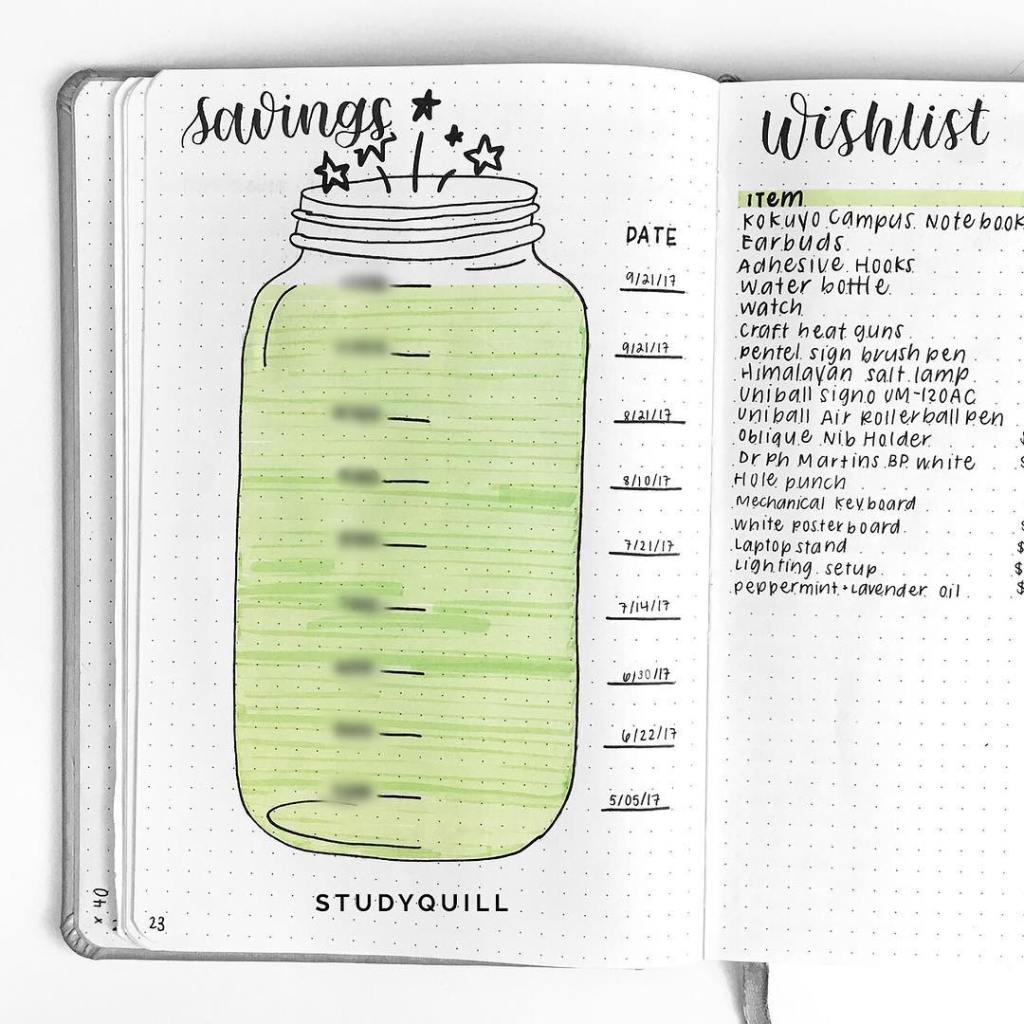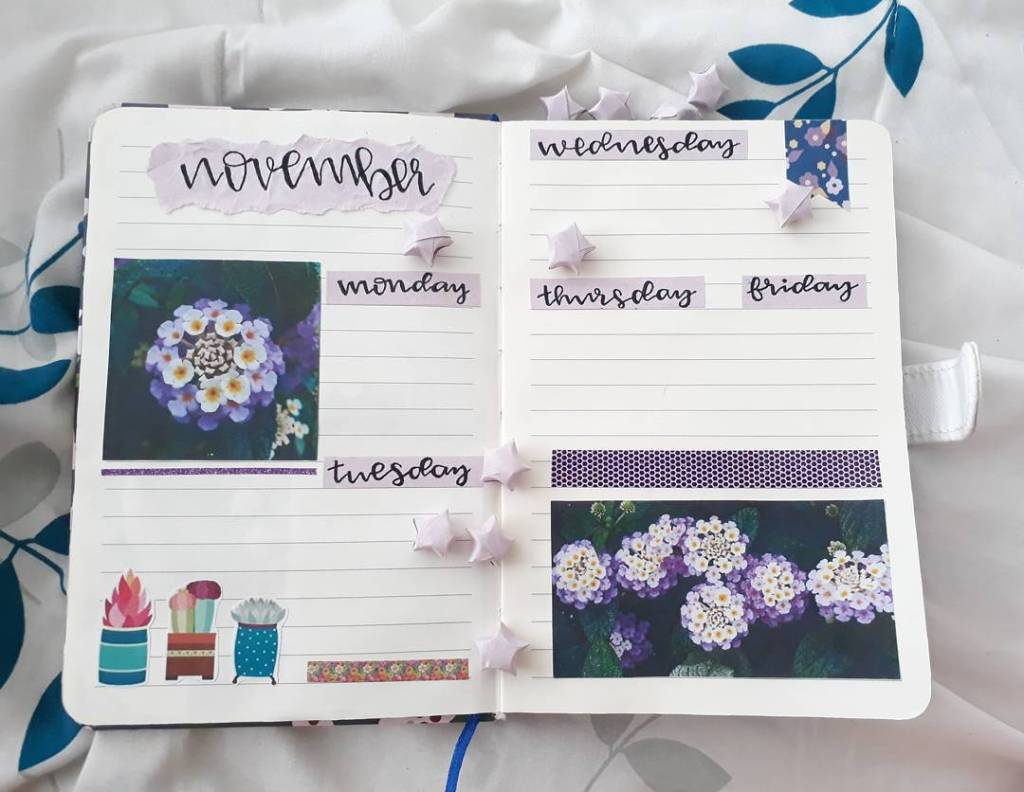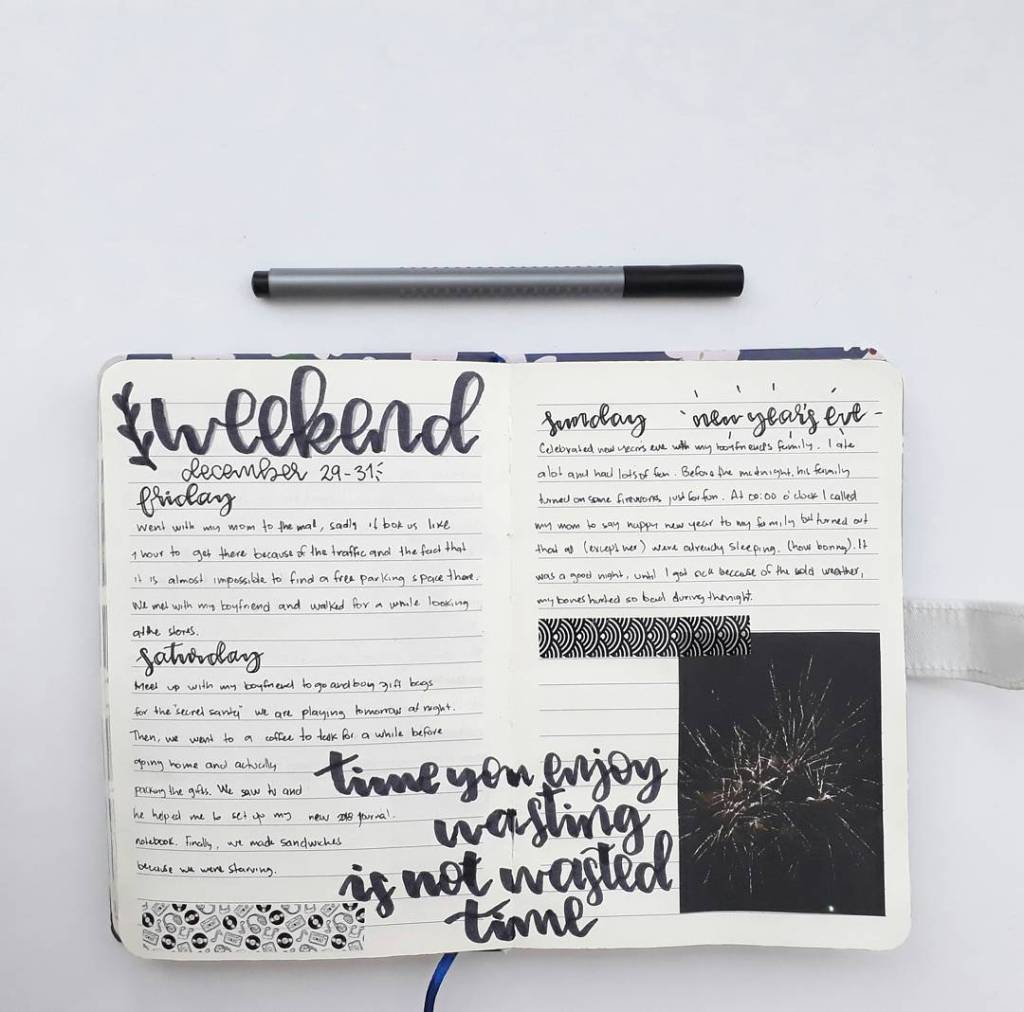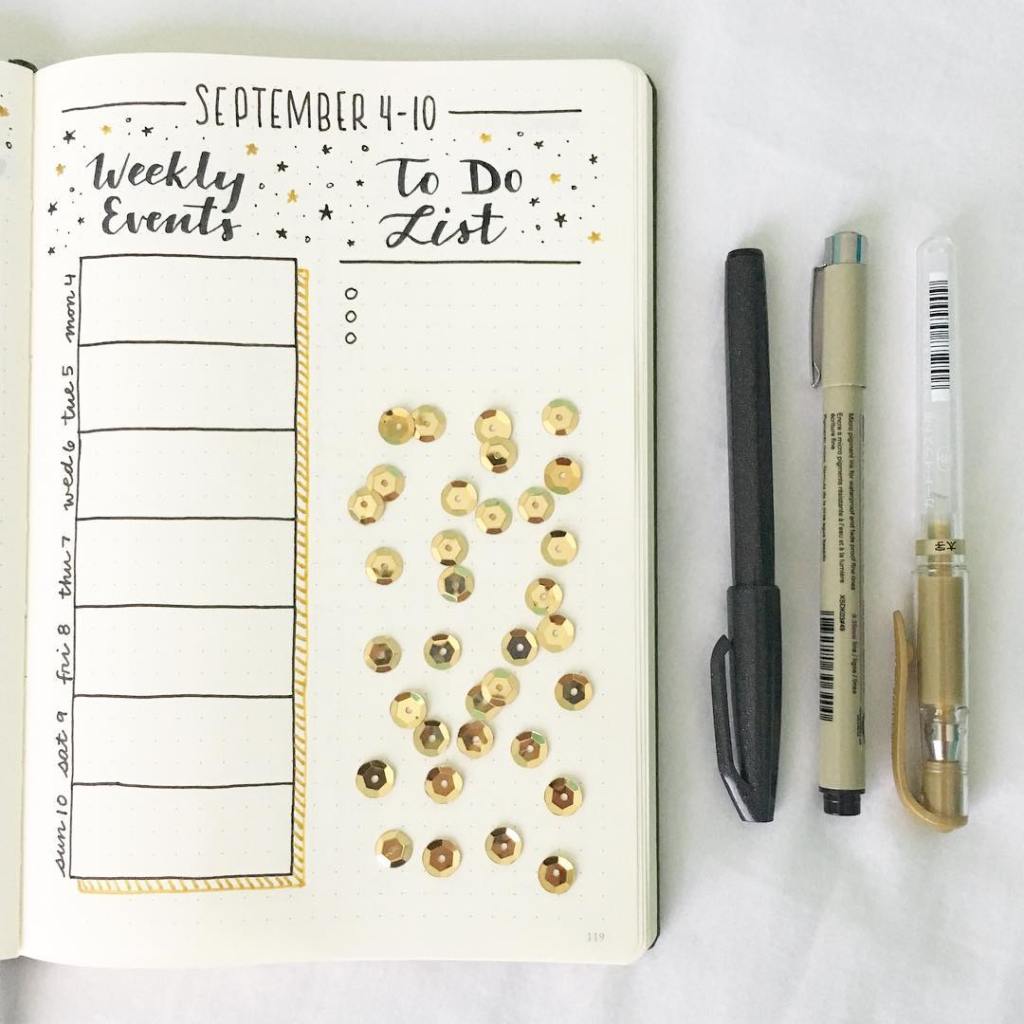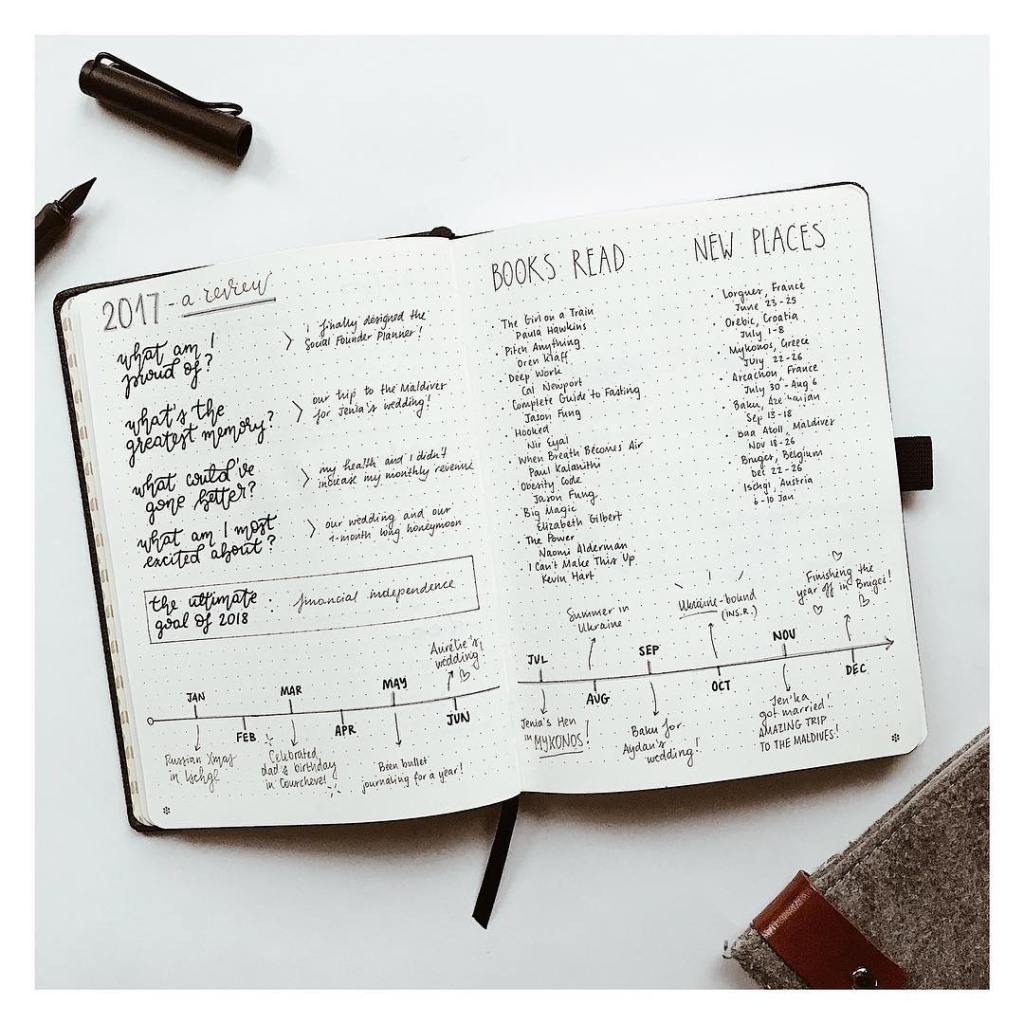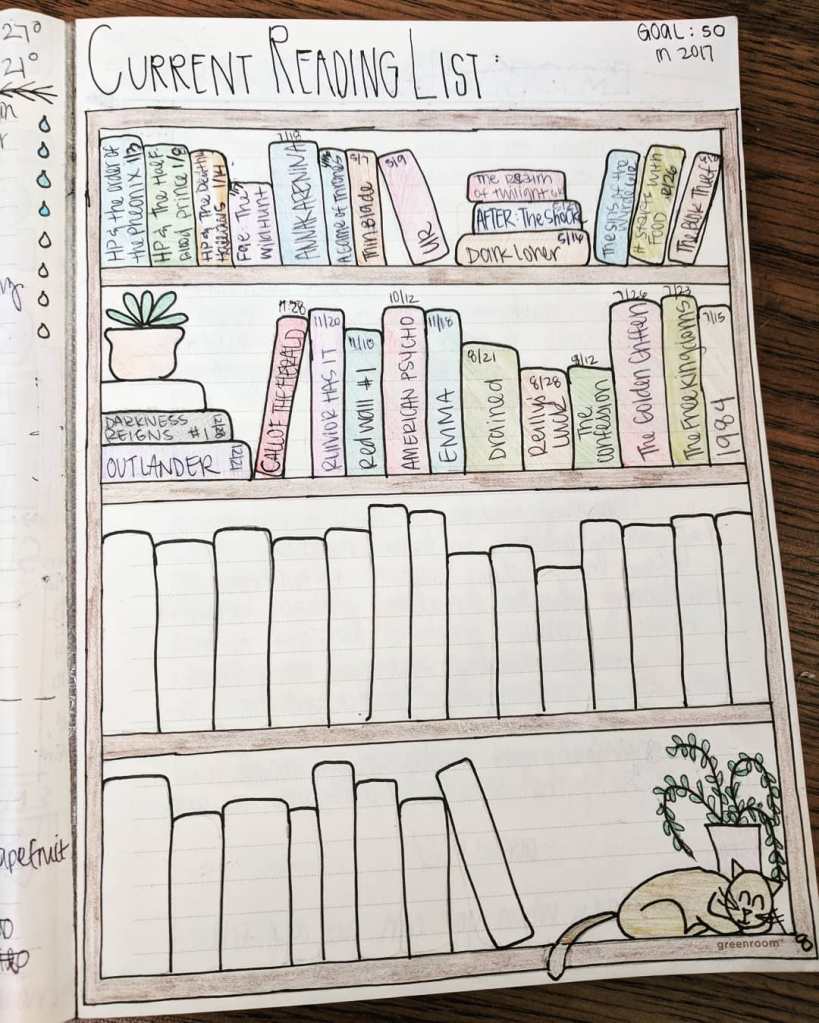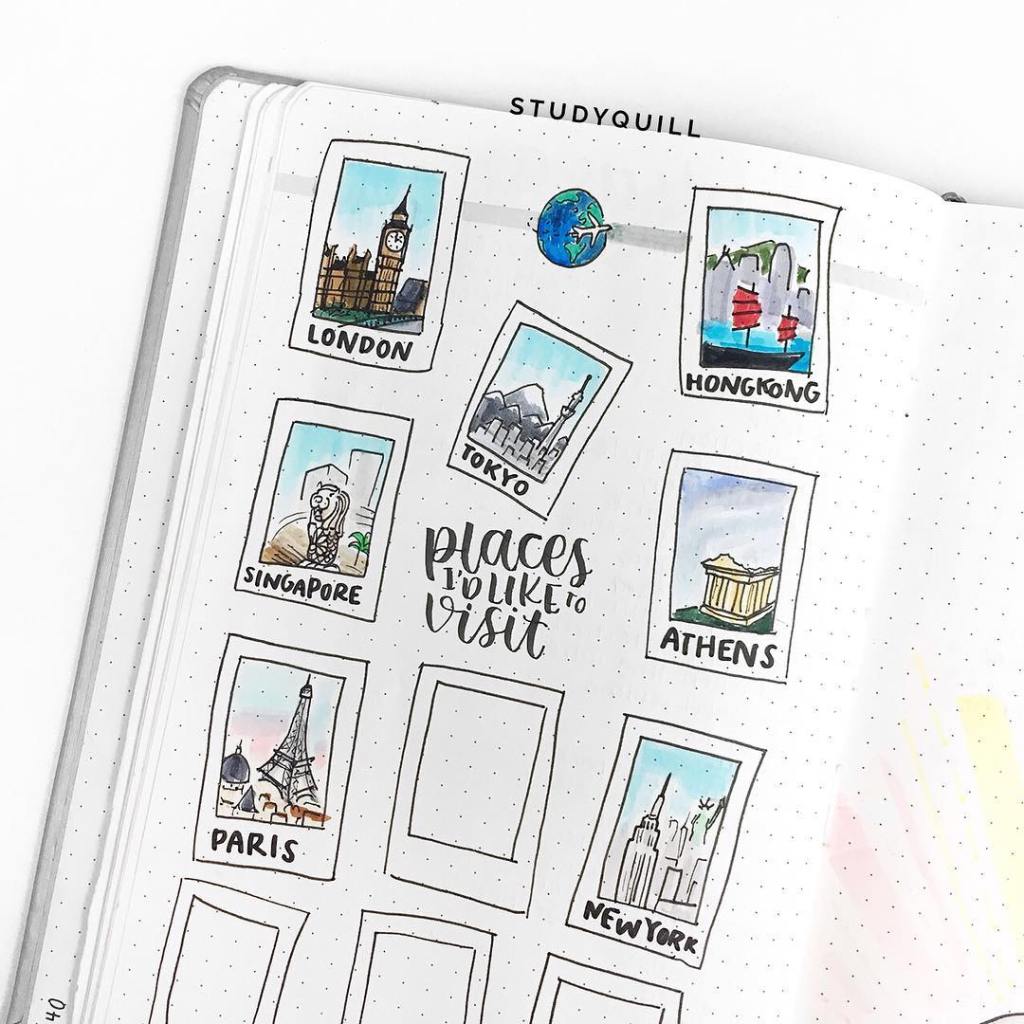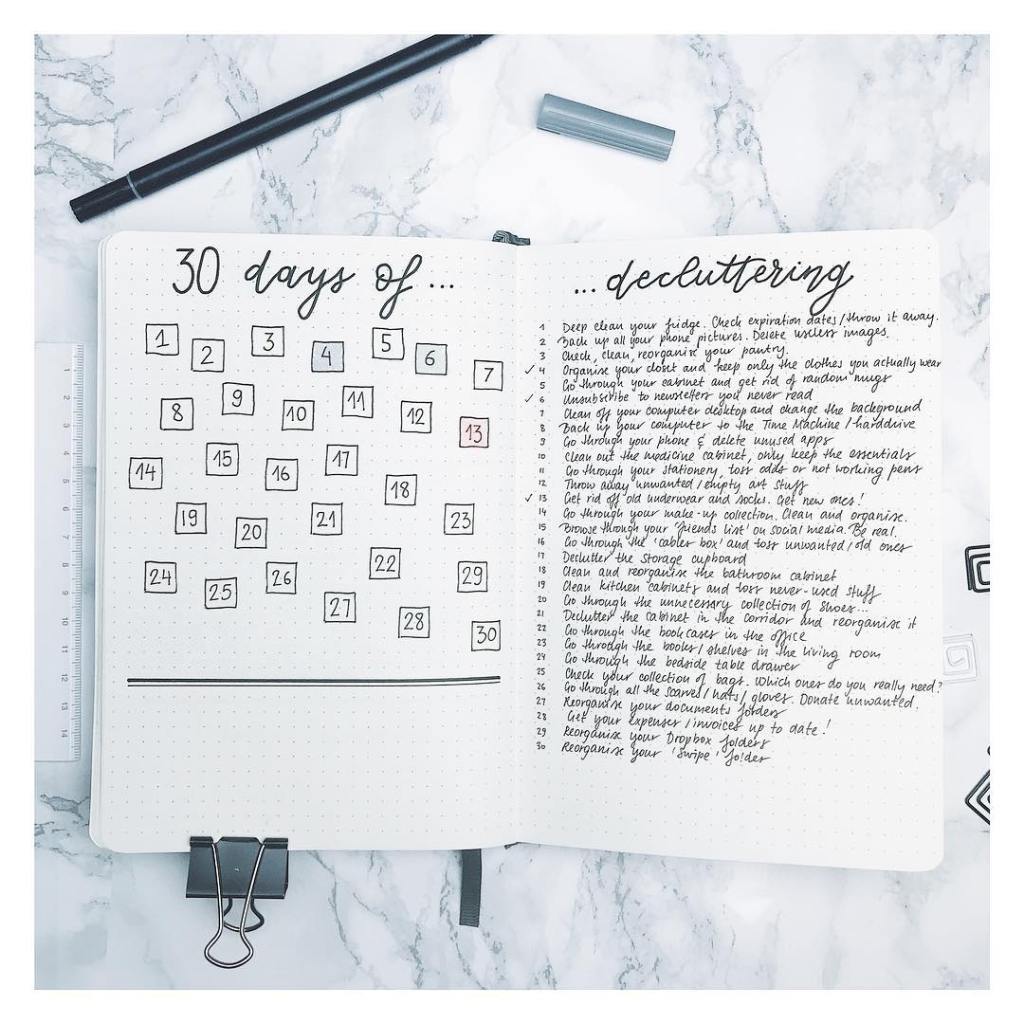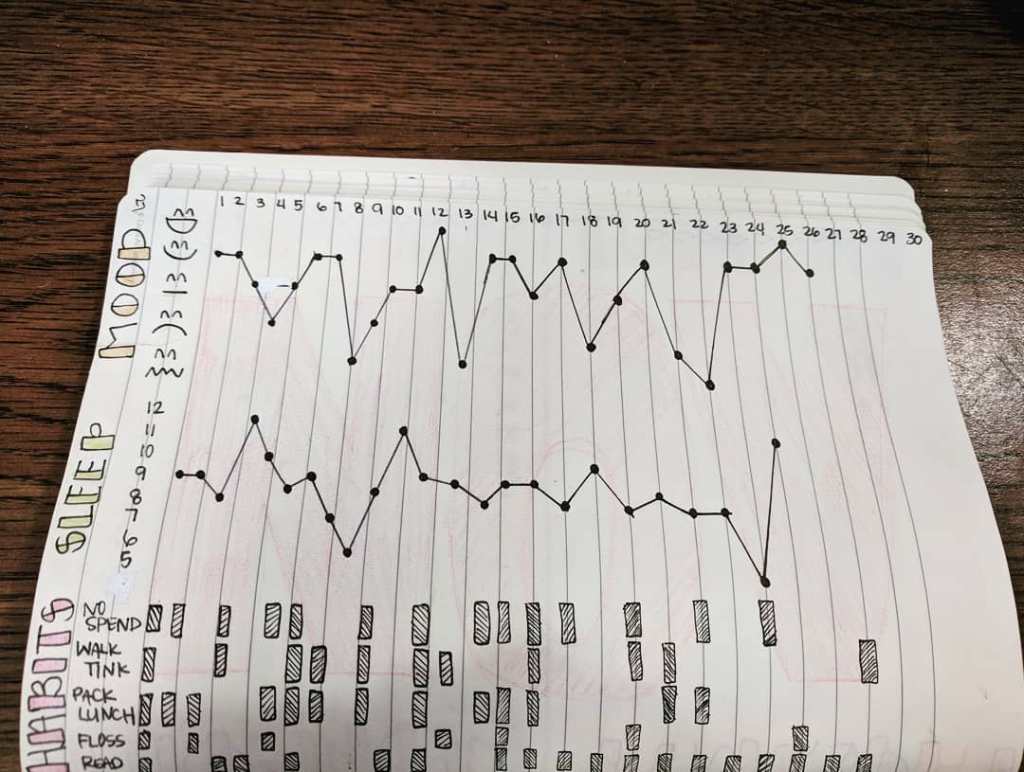Stay Creative and Organized! Everything You Need to Start Bullet Journaling Now
Wondering how to be more organized and creative this year? It turns out the secret is to start a bullet journal. If you haven’t heard of them before, they’re the perfect marriage of a journal, a planner, a calendar, and a habit tracker. And though they can look complicated and intimidating, they’re actually pretty easy to start. All you need is a pen and some paper — and with a little practice, you can end up with something like this.
We talked to blogger and bullet journal enthusiast Renee Day of thediyday.com to find out how she got started — and how others can, too. Don’t worry about putting together a layout quite like her’s just yet. As it turns out, she uses plenty of tools when she designs the spreads in her journal (but we’ll get to that later).
“I started bullet journaling in January 2017,” the DIY enthusiast explains. She started slow, too. It wasn’t until she’d been doing it for a few months that she started to really get serious about it. “Originally, I bought a dot grid journal to practice calligraphy. I had no idea what a bullet journal was. I’d look up journaling hashtags on Instagram and I would see these amazing bullet journal layouts, I was amazed. So I decided to give it a try. I was instantly hooked.”
Why should you start to bullet journal?
Well, for one, it’s fun. With coloring books becoming ever more popular, bullet journaling is partially following in the trend of getting creative with crayons and markers and colored pens. But it also keeps things productive. The best part? It can help with anxiety and stress, too. “It’s a great way to relieve stress,” Renee says. “My mind focuses on creating rather than whatever is causing me strain.”
It can also keep your artistic side engaged while simultaneously working with your more analytical side. “Watching a blank page come to life with something I designed is fulfilling. [And] I’ve become more organized,” the blogger shares. For her, it’s not only an entertaining task, it also helps her stay on task. You can use it to keep an eye on your calendar, plan out your week, jot down important memories, or track things like your diet and exercise. If you know that you’ve been having a hard time sleeping, or you’ve been feeling down, you can also design a spread to keep track of how many hours of sleep you get each night or your daily mood. Check out some of the pages below in the gallery to get a better idea of what we mean.
What kind of spreads can you do in your bullet journal?
“There are all sorts of pages that can be included in a bullet journal,” Renee explains. “[In my 2018 one], I’ve included several layouts that I didn’t have in my 2017 journal including a New Year’s resolutions page and a monthly savings account page. I also have a weight loss/body measurements tracking page, and at some point, I will add a layout for the sick days/vacation days I take from work. There aren’t any limitations on creating layouts. I’ve seen pages where others track their sleep, their moods, books read, meal plans, and the weather.”
Basically, the skies the limit. Anything you want to track, you can. Any kind of spread you want to include, you can. If you want to focus on your family, you can have a page to write about memories with your kids, mark down secret hints your husband drops throughout the year about recipes he likes or gifts he may want, whatever. If you’re all about cooking, you can dedicate a spread to all the recipes that you want to make as well as the ones you’ve already tackled. If you’ve got a goal to watch a movie each week, you can keep track of what you’ve already seen — or even draw 52 buckets of popcorn and color them in as you get closer to your goal.
How can beginners get started bullet journaling?
Like we said, all you need is a pencil and paper if you’re looking to start small or practice your layouts. But Renee recommends starting with “a composition book, a ruler, a pen, and a pencil.” As you start to get more into your bullet journal, or if you want to make it a hobby, you can expand your toolkit. “When the craft becomes a passion, start buying the supplies that are most useful (stamps, markers, stencils, etc.).”
She shows off her tools frequently in posts on her Instagram account and YouTube Channel. “I’ve had the opportunity to try several different bullet journals. But I must say, I am a big fan of Dingbats Notebooks. The pages are thick, perforated, and acid-free (perfect for preserving the art I create in them). As for pens and markers, I use a variety of Tombow USA products, I love their brush pens, and TwinTone markers… The tools I use most often when I bullet journal are a ruler, my alphabet stamps by Prima Marketing, and a black brush pen and Mono Drawing Pen by Tombow.”
You can also find all the supplies you’ll need on Amazon. Newestor’s basic dot grid journal does the trick with 120 sheets (aka 240 pages) and a pack of three for just $10.95. You can also find journals with prettier covers like Panda Studio’s purple water color planner for $4.86. A pack of 10 Huhuhero fine line drawing pens in vibrant colors is only $5.92, and Morsler’s pack of stencils is $7.18. Agu’s foil washi tape makes for a fun decoration, and it’s a bargain at just $7.87.
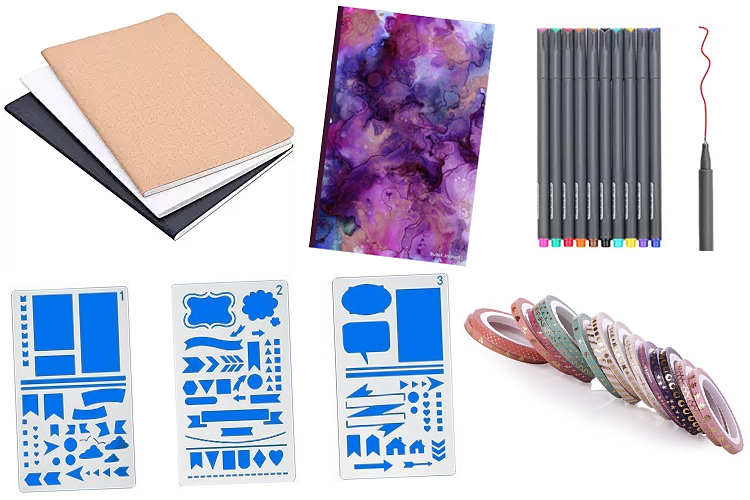
(Photo Credit: Amazon)
Is there anything else bullet journal beginners should know?
“When I first started bullet journaling, I hated making mistakes and I made many,” Renee says. “Certain colors didn’t go well together or I’d smear ink, or the completed layout looked horrible. These mistakes took the fun out of the entire process and I started stressing myself out. This caused me to distance myself from bullet journaling even though I enjoyed it. After a few weeks I decided I didn’t need to be a perfectionist. Building eye appealing layouts would eventually come with time and practice (and correction tape).”
Scroll through the gallery below to check out other Instagram users’ bullet journal pages and all the different layouts and spreads you can do.


